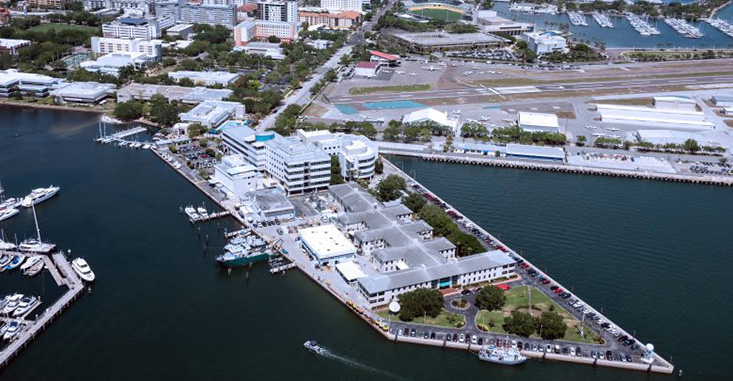
Marine Science Faculty Publications
Document Type
Article
Publication Date
2015
Keywords
MODIS; VIIRS; fluorescence; chlorophyll a, harmful algal bloom; Karenia brevis; CDOM; Gulf of Mexico
Digital Object Identifier (DOI)
https://doi.org/10.3390/s150202873
Abstract
The most recent Visible Infrared Imager Radiometer Suite (VIIRS) is not equipped with a spectral band to detect solar-stimulated phytoplankton fluorescence. The lack of such a band may affect the ability of VIIRS to detect and quantify harmful algal blooms (HABs) in coastal waters rich in colored dissolved organic matter (CDOM) because of the overlap of CDOM and chlorophyll absorption within the blue-green spectrum. A recent HAB dominated by the toxin-producing dinoflagellate Karenia brevis in the northeastern Gulf of Mexico, offshore of Florida’s Big Bend region, allowed for comparison of the capacities of VIIRS and Moderate Resolution Imaging Spectroradiometer (MODIS) to detect blooms in CDOM-rich waters. Both VIIRS and MODIS showed general consistency in mapping the CDOM-rich dark water, which measured a maximum area of 8900 km2 by mid-July 2014. However, within the dark water, only MODIS allowed detection of bloom patches—as indicated by high normalized fluorescence line height (nFLH). Field surveys between late July and mid-September confirmed Karenia brevis at bloom abundances up to 20 million cells·L−1 within these patches. The bloom patches were well captured by the MODIS nFLH images, but not by the default chlorophyll a concentration (Chla) images from either MODIS or VIIRS. Spectral analysis showed that VIIRS could not discriminate these high-phytoplankton water patches within the dark water due to its lack of fluorescence band. Such a deficiency may be overcome with new algorithms or future satellite missions such as the U.S. NASA’s Pre-Aerosol-Clouds-Ecology mission and the European Space Agency’s Sentinel-3 mission. View Full-Text
Rights Information

This work is licensed under a Creative Commons Attribution 4.0 License.
Was this content written or created while at USF?
Yes
Citation / Publisher Attribution
Sensors, v. 15, issue 2, p. 2873-2887
Scholar Commons Citation
Hu, Chuanmin; Barnes, Brian B.; Qi, Lin; and Corcoran, Alina A., "A Harmful Algal Bloom of Karenia brevis in the Northeastern Gulf of Mexico as Revealed by MODIS and VIIRS: A Comparison" (2015). Marine Science Faculty Publications. 1943.
https://digitalcommons.usf.edu/msc_facpub/1943

